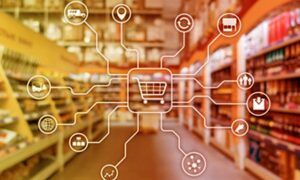Technology has become an integral part of our society, and the plumbing industry is no exception. With technological advancement accelerating daily, plumbers must stay up-to-date with the latest tools, devices, and apps. Embracing technology simplifies complex plumbing solutions and keeps workers safe on the job. However, plumbing technology isn’t without its challenges. In this article, Cummings Plumbing will look at the intersection of plumbing and technology, the specific challenges that come with it, and the solutions that can help overcome these challenges.
Complexity
With plumbing technology comes complexity. Some plumbing systems may require highly specialized technology, and unless plumbers stay up-to-date with the latest devices, they may have difficulty completing their work. Additionally, the complex nature of plumbing technologies makes it difficult to diagnose problems accurately, leading to longer project timelines and potentially costly rework.
The solution is that companies can partner with educational institutions or provide regular training programs for their team to stay on top of technological advances. Plumbers should stay curious and seek new knowledge in the ever-evolving plumbing technology space to keep their skills current.
Cost
Embracing plumbing technology can come with a high price tag. Such technology’s installation, maintenance, and repairs can cost considerable money. However, the long-term savings due to time and resource optimization make it worthwhile. To mitigate initial costs, companies can choose to invest in technologies that offer the most significant savings in labor, energy, or material costs in the long term.
Safety
Plumbing technology can be highly specialized, and improper tools or technologies may cause dangers like accidents, electric shocks, or explosions. Plumbers must follow safety protocols and use personal protective equipment (PPEs) to prevent accidents while working with technology. On the other hand, technology companies can partner with plumbers to develop more intuitive technologies with built-in safety protocols to reduce accidents. For instance, smart plumbing systems can detect leaks or gas build-up and shut the system down automatically, preventing potential hazards.
Environmental Impact
With the rise of green technologies, efficient water usage and environmental sustainability have become priorities. However, not all plumbing technologies are eco-friendly, and some may consume more energy or use harmful chemicals for maintenance. Companies should invest in environmentally sustainable plumbing technology to reduce their carbon footprint. Plumbers should also educate themselves about eco-friendly plumbing solutions to offer their clients more sustainable options.
Cybersecurity
With the rise of technology, data privacy and security risks also become significant. Plumbers who use smartphones, tablets, or other devices to perform their work may be at risk of data breaches, leaving valuable information about clients and their homes vulnerable to hackers. Proper data privacy and security training should be mandatory for all plumbers utilizing smart technologies. Additionally, organizations and technology companies should implement essential security protocols and continuously update them.
Integration
With new technology comes the challenge of integrating it into existing plumbing systems. Compatibility issues with other technologies may arise, making installation, repair, or maintenance work difficult. Technology vendors must provide solutions that seamlessly integrate with existing plumbing systems. Companies can also hire professionals specializing in technology integration to ensure smooth implementation.
Another way to address integration issues is by investing in all-in-one plumbing technology solutions that combine multiple technologies into one platform, reducing compatibility concerns.
Reliability
Technology is meant to simplify things, but when it fails to work correctly, it only adds to the complexity of plumbing work. Plumbers should work with vendors that can provide reliable products with adequate warranties and guarantees, and companies can schedule regular maintenance checks to ensure that technology is functioning correctly.
Additionally, technology can assist plumbers in streamlining their work processes, tracking inventory and orders, managing schedules and appointments, and communicating with clients. The intersection of plumbing and technology offers numerous benefits and challenges that must be addressed.
By staying up-to-date with the latest advancements, implementing proper training and safety protocols, and working with reliable technology vendors, plumbers can overcome these challenges and continue to provide efficient and effective plumbing solutions for their clients
Maintaining Records
Tracking work orders, maintenance schedules, and job progress can be a daunting task in itself. Technology can offer useful tools to handle these tasks, but managing and transferring data between devices can be tricky. Choosing technology solutions offering cloud-based data storage, where data can be accessed from anywhere, is the best solution for maintaining job records.
In addition to the challenges mentioned above, new and emerging technologies are always being developed in the plumbing industry. Staying updated with these advancements is necessary for plumbers to remain competitive and provide the best service possible.
As technology continues to intersect with plumbing, companies, and workers need to embrace it and find solutions to overcome any challenges that may arise. With proper training, safety protocols, and reliable technologies in place, the intersection of plumbing and technology can lead to improved efficiency, cost savings, and a higher standard of service for customers.
Conclusion
Cummings Plumbing considers that technological advances have brought diverse benefits to the plumbing industry, simplifying complex systems and ensuring safe and efficient plumbing work. However, it is essential to understand the challenges of this intersection of plumbing and technology. Companies and plumbers must stay up-to-date with the latest technology trends, invest in proper training, and select reliable vendors to ensure that technology positively impacts their work processes and provides benefits in the long term. By overcoming the challenges of plumbing technology through innovative solutions and best practices, the industry can continue to evolve and stay modern.




































